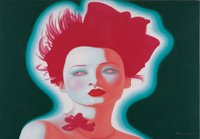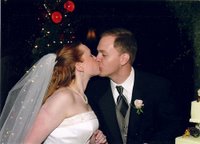
Tuesday night I went to the opening for
Jiang Hu: Contemporary Chinese Art, a survey of established and emerging Chinese artists, at the
Tilton Gallery on East 76 Street - the first opening I've ever attended that featured a brief performance of classical Chinese opera.
The Upper East Side is not an area I generally associate with galleries, though it certainly boasts a few; instead I tend to think of museums, Madison Avenue, the Central Park Zoo, and elderly fathers with their trophy wives, pushing lab-hatched offspring around in Bugaboos. But contemporary Chinese art? No.
Unfortunately, the Tilton Gallery is in a distractingly beautiful townhouse at 8 East 76 Street, just off Central Park. Unfortunate because anyone accustomed to the warehouse spaces of Chelsea is unlikely to notice any art when there is so much prewar detail on display. The gallery apparently moved to its current space in 2005, and takes up two full floors (two
gorgeous, herringbone floors). It has large windows at the front and back (the better to see your well-heeled neighbors on their way to Café Boulud), fireplaces, and curlicue molding snaking up and down every wall. This is the sort of building for which real-estate-obsessed New Yorkers would gladly give up limbs, children, or personal ethics. Am I exaggerating? Not by much. Go see for yourself.
The art is funny. China is so trendy right now that it's hard to know what to think of it. A large neon sign by
Sui Jianguo reads simply "Made in China," and has a price tag of $50,000. (Three words that have always meant "cheap." So naughty!) A portrait by
Qi Zhi Long, of a young woman in Communist dress, is probably a good investment - a similar painting sold for double its high estimate at Sotheby's recent Contemporary Art Asia auction. The painting I'd most like to see in a museum collection, however, is a mottled, bloody-looking portrait by
Yang Shaobin, "the Francis Bacon of contemporary Chinese art."



















